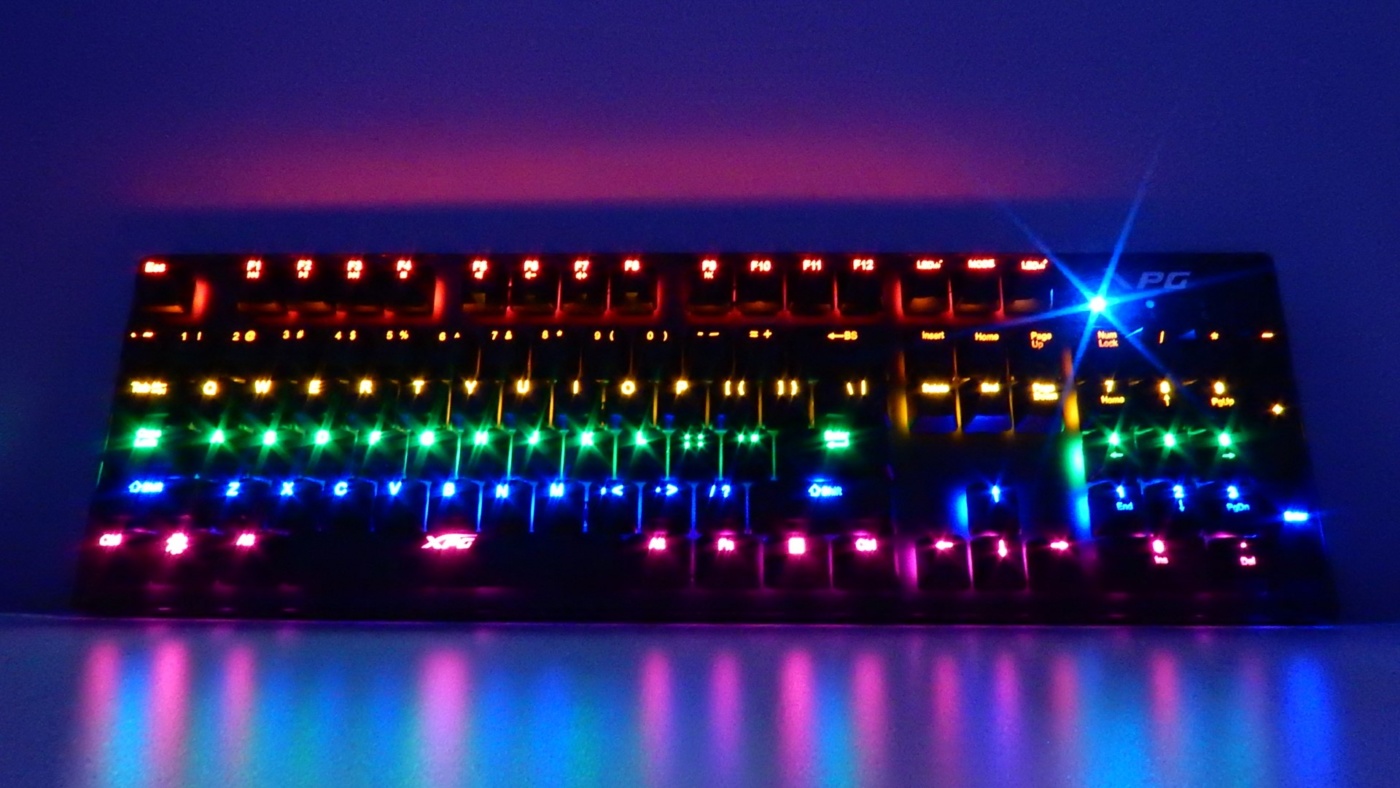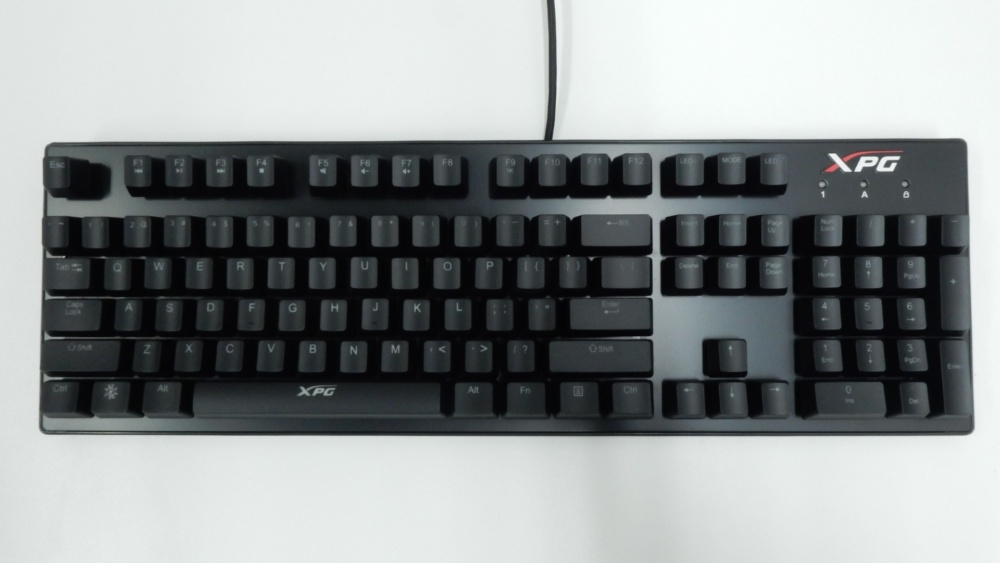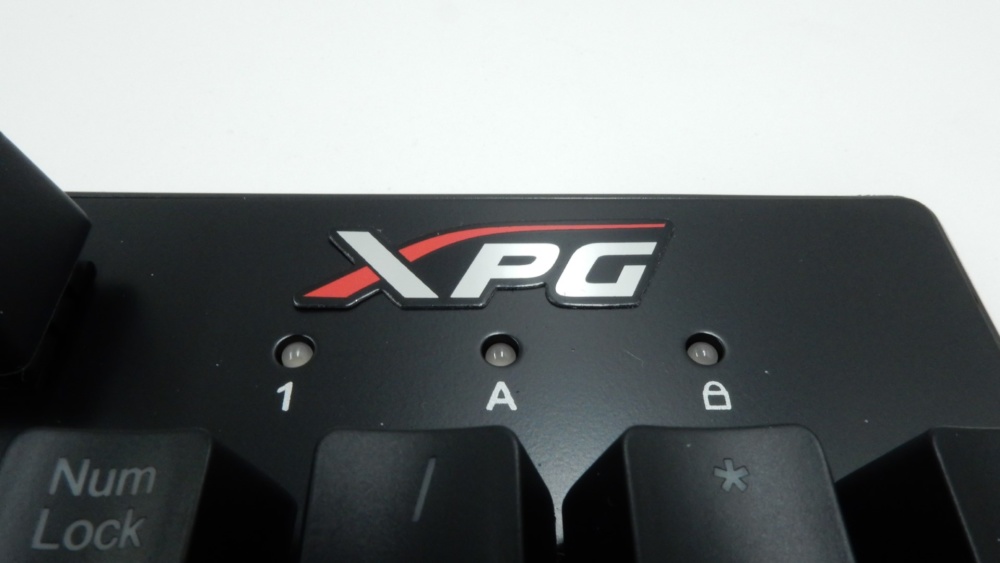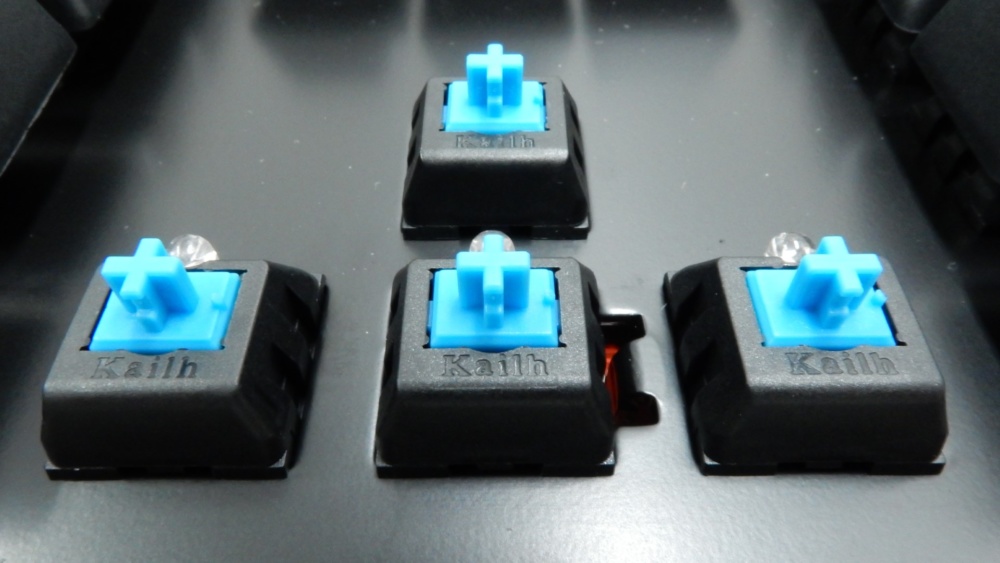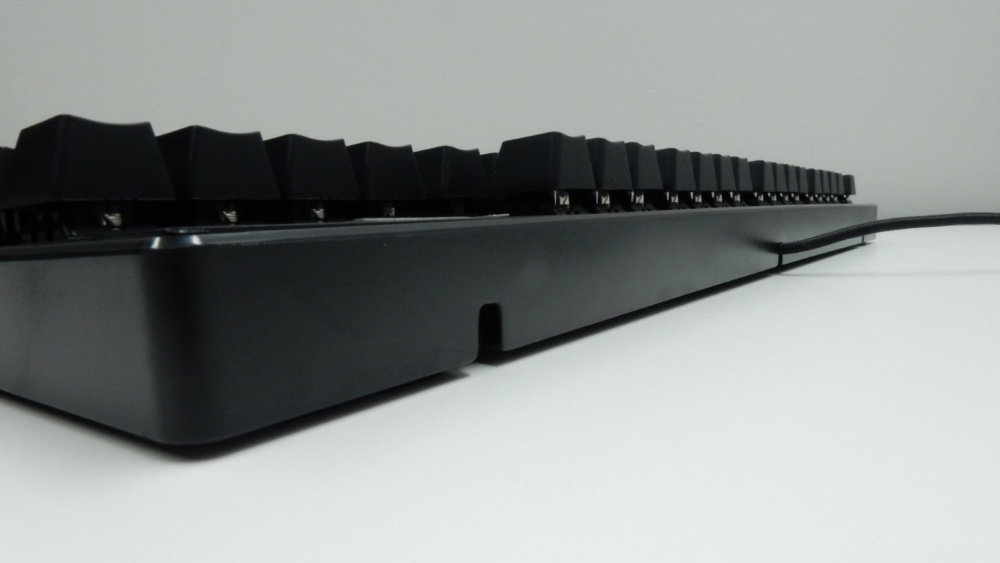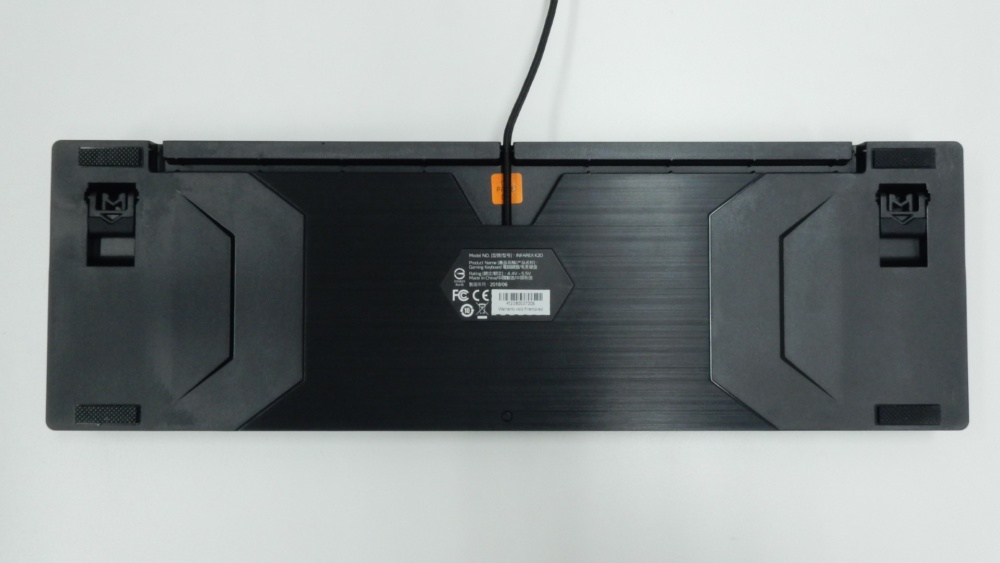XPG INFAREX K20 Overview
While the K20 features a 104-key layout, there are a few quirks about the design, but we will get to those later on. Just like nearly every gaming keyboard currently available, the INFAREX K20 is outfitted with mechanical key switches and LED lighting, though the latter may leave many buyers scratching their heads.
After removing the K20 from its packaging, we first realized just how sturdy this keyboard is. A solid metal top plate, with it’s semi-gloss black finish and XPG branding, lends itself to providing the K20 a very solid base. A molded plastic body rests below the top plate, and provides a slight frame around the top plate, for a quite minimalist design.
The side profile of the INFAREX K20 gives us a look at the curved keytop layout, which is quite common. The slight slope to the body of the keyboard provides a comfortable starting point, though two feet on the bottom of the keyboard can increase the slope slightly.
The INFAREX K20 is available with a single key switch offering, the Kailh Blue. These switches are definitely not new to us, and have provided us with countless hours of typing comfort and precision over the years when testing various other keyboards with similar outfittings. With a rated lifespan of 50 million keypresses, the tactile feel and sound of the Kailh Blue switches are sure to impress anyone looking for that quintessential mechanical keyboard experience. We will note that the Kailh Blue switches found on the K20 have a black body, as the LED in the body is a single color. This makes them slightly different than the RGB Kailh Blue switches, though their keypress functionality is the same.
Sitting atop the Kailh Blue switches are what appear to be single-shot key caps with painted legends. This is a common key cap setup found on many keyboards and offers a great starting point, with options for custom key caps in the future. One thing that bothered us about the key caps was the inconsistent font size and thickness found on the row second from the top. If the rest of the key caps were formatted with a 12-point font, this row somehow ended up with 10-point. We didn’t catch this right away, but once we saw it we couldn’t unsee it.
Connecting the keyboard to your PC is a braided cable with a USB Type-A end. One great feature about this cable and the INFAREX K20 is that there are three placement options for where the cord exits the keyboard’s body. Via channels found on the bottom of the keyboard, the braided cable can be routed out the left, center or right, depending on your preference.
The base of the K20 is very plain, but offers four rubber feet to keep the keyboard in place, and the two previously mentioned feet allow for a bit of angle adjustment. In addition, there are the aforementioned cable routing channels to allow for a bit of desktop cable management.


